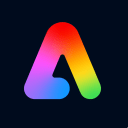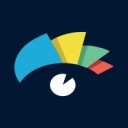Infogram vs Tableau: Which data tool is right for you?
- 01Infogram vs Tableau: overview
- 02What's the difference between Infogram and Tableau?
- 03Infogram pros and cons
- 04Tableau pros and cons
- 05Infogram compared to Tableau
- 06Tableau compared to Infogram
- 07Features comparison
- 08Infogram vs Tableau: Which is the best for your business?
- 09Promotions on Design software
- 10Alternatives to Infogram & Tableau
Save up to $1,062 on Infogram
Save up to $1,062 on Infogram
Suppose you’re looking to enhance your business's data visualization capabilities. With an abundance of tools available to help you create infographics, charts, dashboards, and reports, it can quickly become overwhelming trying to manage multiple stand-alone solutions. Juggling different platforms can lead to inefficiencies and lost time.
The answer? A robust tool that offers comprehensive data visualization features in one place. Infogram and Tableau are two such platforms, both known for their powerful capabilities in turning data into meaningful visuals. To determine which is the best fit for your business, it's essential to understand their key features and differences. Read on for our detailed comparison!
Infogram vs Tableau: overview
When it comes to data visualization and development tools, Infogram and Tableau stand out as two of the most prominent contenders. Both platforms offer a wide range of features and capabilities designed to help businesses and professionals create compelling visual representations of their data. However, choosing the optimal tool in the Infogram vs Tableau comparison requires a thorough evaluation of their core functionalities and how they align with your specific needs.
To assist you in making an informed decision, we’ve created a comprehensive comparison table that highlights the essential characteristics of each platform. Using a star-based rating system and detailed commentary, we aim to simplify your assessment of the table below and guide you toward the most suitable data visualization solution for your business.
What's the difference between Infogram and Tableau?
Infogram and Tableau are two powerful tools for data visualization, each designed for different use cases and user preferences. While both platforms offer essential features like chart creation, interactive visuals, and reporting, their approach and complexity differ significantly.
Infogram is known for its user-friendly interface and is ideal for creating quick, visually appealing infographics, reports, and charts. It caters to users who may not have a technical background and need a straightforward tool for creating compelling visual content. Infogram offers a vast library of templates and drag-and-drop functionality, allowing users to generate visuals without the need for advanced data skills. Its focus is on ease of use, making it perfect for marketers, educators, and content creators who prioritize simplicity and design over complex data manipulation.
On the other hand, Tableau is a comprehensive data analysis and visualization tool aimed at more advanced users, particularly data analysts and business intelligence teams. Tableau offers powerful capabilities for handling large datasets, creating dynamic dashboards, and performing in-depth data exploration. Its integration with various data sources, from spreadsheets to databases, and its advanced analytics features, like calculated fields and AI-driven insights, set it apart as a high-end solution for businesses that need detailed data insights. However, Tableau’s extensive functionality comes with a steeper learning curve, requiring more time and expertise to master compared to Infogram.
One of the key differences is how these platforms handle data complexity. While Infogram excels at creating polished, shareable visuals, Tableau is the go-to for users who need deep data analysis and real-time insights. Ultimately, the choice between Infogram and Tableau depends on whether you need an easy-to-use tool for quick visuals or a powerful platform for advanced data visualization and analytics.
Infogram pros and cons
What are the advantages of Infogram?
- User-friendly interface: Infogram is designed with simplicity in mind, making it easy for beginners to create professional-looking infographics, charts, and reports with minimal effort.
- Pre-built templates: The platform offers a wide range of customizable templates, helping users quickly create visually appealing content without starting from scratch.
- Real-time collaboration: Infogram allows multiple users to collaborate on projects simultaneously, making it a great tool for teams working on shared data visualization projects.
- Drag-and-drop functionality: With its intuitive drag-and-drop system, Infogram enables users to quickly add and adjust visual elements, such as images, charts, maps, and icons, without needing coding or technical expertise.
- Integration with external data sources: Infogram supports importing data from external sources such as Google Sheets, Dropbox, and Excel, making it easy to integrate existing data into your visualizations.
What are the disadvantages of Infogram?
- Limited data analysis capabilities: Infogram is focused on visualization, but it lacks advanced data manipulation and analysis features, making it less suitable for complex datasets.
- Pricing for advanced features: While there is a free version, access to more advanced features, such as interactive maps or high-resolution downloads, requires a premium subscription.
- Limited customization options: Compared to more advanced tools like Tableau, Infogram’s customization options are somewhat limited, which may restrict users who need highly tailored designs.
- Not ideal for large datasets: Infogram is best suited for small to medium datasets. Handling large datasets can slow the platform down and make it less efficient.
- Static exports: While Infogram excels in creating interactive visuals online, some export formats (like PDFs or images) may lose the interactivity, limiting how they can be used in presentations.
Compare Infogram to other tools
Tableau pros and cons
What are the advantages of Tableau?
- Advanced data analytics: Tableau is known for its powerful analytics capabilities, enabling users to handle complex datasets, perform in-depth analysis, and generate insights through calculated fields, filters, and statistical functions.
- Interactive dashboards: Tableau allows users to create highly interactive and dynamic dashboards, making it easy to explore data in real time and drill down into specific details with just a click.
- Wide data source integration: Tableau supports connections to a broad range of data sources, from Excel and Google Sheets to SQL databases and cloud services, providing flexibility for data integration.
- Customizable visuals: Tableau offers deep customization options for creating a variety of visualizations, including charts, maps, graphs, and more, allowing users to tailor visuals to their specific needs and audiences.
- Strong community and resources: Tableau has a large, active user community, as well as extensive resources like tutorials, forums, and online courses, making it easier for new users to learn the tool and stay up to date with the latest features.
What are the disadvantages of Tableau?
- Steep learning curve: While Tableau is feature-rich, it can be challenging for beginners to master. The complexity of its advanced functionalities may require significant training and time investment.
- High cost: Tableau’s pricing structure can be expensive, especially for small businesses or individual users. Licensing costs for Tableau Desktop and Tableau Server can add up, making it less accessible for smaller budgets.
- Performance with large data sets: While Tableau is built for handling large datasets, complex calculations or real-time data processing can sometimes slow down performance, especially when using high-volume or multi-source data.
- Limited export options: Exporting data or visuals from Tableau can be restrictive, with fewer customization options in the exported files. Some users may find that exported charts or reports don't retain the same interactivity or formatting.
- Dependence on external data preparation: Tableau’s built-in data preparation tools, though improving, are not as strong as dedicated data wrangling platforms, meaning users may need to rely on external tools like Excel or SQL for extensive data cleaning or transformation.
Infogram compared to Tableau
Infogram and Tableau are both data visualization tools, but they cater to different audiences and use cases. Infogram is designed for users who prioritize simplicity and ease of use, making it ideal for quickly creating infographics, reports, and simple charts. Its drag-and-drop interface and pre-built templates are perfect for non-technical users, such as marketers and educators.
In contrast, Tableau is a more powerful tool for advanced data analytics and deep data exploration. It excels at handling large datasets, creating dynamic, interactive dashboards, and offering extensive customization options, making it better suited for data analysts and business intelligence teams.
Is Infogram better than Tableau?
Whether Infogram is better than Tableau depends on your specific needs. Infogram is ideal for users looking to create visually appealing, simple infographics or reports quickly, with minimal technical expertise. It’s perfect for marketers, educators, and content creators who prioritize ease of use over complex analytics.
On the other hand, Tableau is the better choice for businesses or data professionals who require advanced data analysis, large dataset handling, and interactive, customizable dashboards. While Infogram is more user-friendly and accessible, Tableau’s extensive features make it superior for in-depth data exploration, making it better suited for complex, data-driven environments.
What is Infogram best used for?
Infogram is best used for creating visually appealing and easy-to-understand infographics, reports, and charts. Its intuitive drag-and-drop interface and library of customizable templates make it ideal for users who need to communicate data quickly without requiring extensive technical skills.
Infogram is particularly suited for marketing professionals, educators, and social media managers who want to enhance their content with engaging visuals. Its ability to import data from sources like Google Sheets and Excel simplifies the process of turning raw data into polished presentations. Infogram excels when ease of use and visual impact are more important than in-depth data analysis.
Can Infogram replace Tableau?
Infogram cannot fully replace Tableau, as the two tools serve different purposes and cater to different user needs. Infogram is ideal for users who need quick, visually appealing infographics, reports, and simple charts without requiring advanced data analysis skills. It focuses on ease of use and visual design, making it perfect for marketers and content creators.
Tableau, on the other hand, is a powerful tool for in-depth data analysis and complex visualizations. It excels at handling large datasets and offers robust analytics capabilities. For businesses requiring advanced data insights, Tableau remains a more comprehensive solution than Infogram.
Is Infogram cheaper than Tableau?
Yes, Infogram is generally cheaper than Tableau. Infogram offers more affordable pricing plans, including a free version with basic features and paid tiers that are suited for small businesses, marketers, and educators who need simple data visualizations and infographics.
In contrast, Tableau is a premium tool designed for advanced data analytics, with higher costs associated with its professional-grade features, enterprise-level capabilities, and extensive customization options. Tableau's pricing is often suited for larger organizations and data analysts who require complex, real-time data insights, whereas Infogram’s pricing is more accessible for users focused on creating visually engaging content quickly.
Is there a better Design software than Infogram?
While Infogram is an excellent tool for creating infographics and simple data visualizations, it's important to consider other specialized data visualization tools available in the market.
Alternatives to Infogram include Tableau, Power BI, Google Data Studio, and Canva, each offering unique strengths depending on your needs. Tableau and Power BI excel in advanced data analytics and handling large datasets, while Canva offers a more design-centric approach for creating visual content. Evaluating your specific requirements—such as ease of use, data complexity, or design needs—will help you identify the data visualization tool that best aligns with your objectives and workflow.
3 months free on the Business and Teams plans on Infogram
Get 3 months free on the Business and Teams plans on Infogram and up to $1,062 savings with Secret.
Tableau compared to Infogram
Tableau and Infogram are both data visualization tools, but they cater to different needs. Tableau is a more advanced platform designed for data analysts and business intelligence teams, offering powerful analytics, interactive dashboards, and the ability to handle large and complex datasets. It is ideal for deep data exploration and in-depth reporting.
Infogram, on the other hand, is user-friendly and focused on creating simple, visually appealing infographics, charts, and reports. It is best for non-technical users, such as marketers and educators, who need quick and attractive visuals without advanced data manipulation or analysis capabilities.
Is Tableau better than Infogram?
Tableau is better than Infogram if your focus is on advanced data analytics, in-depth reporting, and handling large datasets. It offers powerful tools for data exploration, making it ideal for organizations that require complex, real-time insights and detailed analysis. Tableau’s interactive dashboards and extensive customization capabilities also make it more suitable for data analysts and business intelligence teams.
However, this power comes with a steeper learning curve. For users who need advanced analytics, Tableau surpasses Infogram, but for those prioritizing simplicity and quick visuals, Infogram remains a better option for straightforward data presentation.
What is Tableau best used for?
Tableau is best used for advanced data analytics and visualization, making it ideal for data analysts, business intelligence teams, and organizations that need to derive actionable insights from large, complex datasets. Its ability to connect to multiple data sources, create interactive dashboards, and perform real-time data analysis makes it invaluable for in-depth reporting and decision-making.
Tableau excels in scenarios where businesses need to track performance, identify trends, or forecast outcomes using dynamic and customizable visuals. It is especially useful in industries such as finance, healthcare, and retail, where data-driven decisions are critical for success.
Can Tableau replace Infogram?
Tableau cannot fully replace Infogram, as they serve different purposes and cater to different users. Tableau is a powerful tool designed for advanced data analysis, allowing users to handle large datasets, create interactive dashboards, and perform in-depth reporting. It is ideal for data analysts and business intelligence teams.
Infogram, on the other hand, is designed for creating simple, visually engaging infographics and reports quickly. It is better suited for marketers, educators, and content creators who need user-friendly tools for basic data visualization. For complex analytics, Tableau is superior, but for quick, polished visuals, Infogram is more efficient.
Is Tableau cheaper than Infogram?
Tableau is generally more expensive than Infogram. Tableau's pricing reflects its advanced features and capabilities, such as handling large datasets, complex data analysis, and creating interactive dashboards. Its licensing costs, particularly for Tableau Desktop and Tableau Server, are higher and geared toward larger businesses or organizations that require extensive data analytics.
Infogram, on the other hand, offers more affordable pricing plans, including a free version, and is tailored for users who need simple visualizations and infographics. Infogram’s cost structure is more accessible for individuals or small businesses, while Tableau’s higher price is justified by its robust, enterprise-level functionality.
Is there a better Business Intelligence software than Tableau?
While Tableau is a leading platform for data visualization and advanced analytics, it's important to explore alternative tools that may better suit specific needs.
Alternatives to Tableau include Power BI, Qlik Sense, Google Data Studio, Looker, and Sisense, each offering unique strengths in data analysis and visualization. Power BI is known for its seamless integration with Microsoft products and affordability, while Qlik Sense excels in data discovery and self-service analytics. Google Data Studio offers a user-friendly, cloud-based solution, and Looker focuses on embedded analytics. By examining the strengths of these alternatives, you can identify the best tool to meet your data analysis and reporting requirements.
Features comparison
Infogram Excels Ahead of Tableau for Ease of Use
When comparing these two leading data visualization software platforms, Infogram excels ahead of Tableau in terms of ease of use. Infogram’s intuitive interface is particularly appealing to beginners in data visualization or content creation who are looking for a simple tool to get started. With drag-and-drop functionality, users can easily create engaging charts, infographics, and maps without needing any technical expertise. For example, a marketer can quickly pull in data from Google Sheets to design a visual presentation in minutes.
In contrast, Tableau, though user-friendly for experienced analysts, has a steeper learning curve due to its robust features like real-time analytics, which can overwhelm new users. Therefore, Infogram is ideal for individuals or teams who prioritize simplicity and a faster learning process.
Tableau Leads Ahead of Infogram for Data Integration Capabilities
Tableau takes the lead when it comes to data integration possibilities, offering a vast array of connectors that make it an excellent choice for businesses managing complex and diverse datasets. Tableau supports live link and extract options for numerous data management sources, including Excel, SQL Server, Google Analytics, Salesforce, and AWS, among others. For example, a financial analyst can seamlessly pull real-time data from an SQL database and combine it with marketing data from Google Analytics into a single, dynamic Tableau dashboard.
On the other hand, while Infogram integrates with key platforms like Google Sheets and Dropbox, it lacks the depth and variety of connectors that Tableau offers. For companies that rely on pulling data from multiple sources for in-depth analysis, Tableau’s comprehensive integration options make it the better choice.
Infogram Excels Ahead of Tableau for Audience Engagement Insights
Though both Infogram and Tableau offer analytics and tracking features, Infogram excels in providing more detailed insights into viewer interactions and engagement levels. Infogram's analytics feature allows users to track not just views and clicks, but also how audiences interact with specific elements within visualizations, such as hovering over data points or engaging with interactive charts. For example, a marketer can analyze how long viewers spend on different parts of an infographic to refine content strategy.
In contrast, while Tableau provides robust data analytics and reporting capabilities, its focus is more on internal data analysis rather than tracking external audience engagement. This makes Infogram a superior choice for those prioritizing content performance and user interaction insights.
Both Infogram and Tableau Offer Superb Real-Time Collaboration Features
Real-time collaboration is a shared strength of both Infogram and Tableau, enabling teams to work together seamlessly on data visualizations. With Infogram, users can simultaneously edit interactive charts, maps, and infographics, making it easy for marketers or educators to collaborate on visually appealing presentations. For instance, a content team can co-create an infographic while receiving live feedback.
Tableau, on the other hand, allows multiple users to collaborate on live dashboards, offering robust features for data-driven decision-making. An analyst and manager, for example, can jointly explore sales trends in real time, adjusting filters and parameters without interrupting the workflow. Both platforms streamline collaboration, enhancing productivity for remote or distributed teams.
Tableau Excels Ahead of Infogram for On-the-Fly Data Exploration
When it comes to on-the-fly data exploration, Tableau excels ahead of Infogram with its intuitive drag-and-drop interface, allowing users to instantly analyze data without needing complex queries or extensive setup. Tableau’s real-time analysis capability lets entrepreneurs visualize patterns, trends, and insights by simply dragging data fields onto a dashboard. For instance, a business owner can quickly assess sales performance across regions by dragging location and revenue data onto Tableau's workspace, instantly generating a detailed map and chart.
In comparison, Infogram, while user-friendly for creating simple visuals, lacks the depth of real-time data exploration, making Tableau the superior choice for those requiring quick, insightful data-driven decisions.
Infogram Excels Ahead of Tableau for Pre-Designed Templates
If pre-designed templates simplify your workflow, Infogram excels ahead of Tableau in this regard. Infogram offers an extensive library of professionally designed templates, ranging from reports and charts to maps and social media visuals. These templates allow users to quickly create polished, visually compelling content without any design expertise. For example, a marketer needing to produce an infographic for a campaign can simply choose a template and populate it with data, saving time and effort.
In contrast, while Tableau offers flexible data visualizations, it lacks the same breadth of pre-built design templates, making Infogram the better option for non-designers looking for a fast, hassle-free content creation experience.
Tableau Excels Ahead of Infogram for Handling Big Data
If you handle large datasets, Tableau excels ahead of Infogram due to its ability to process big data swiftly and efficiently. Tableau's in-memory technology and highly optimized data engine allow users to work with vast volumes of data in real time without lag or performance issues. For example, a financial analyst can connect Tableau to a database containing millions of transactions, generating interactive dashboards that track trends and insights instantly.
In contrast, Infogram, while excellent for creating simple, visually engaging content, is not designed to manage or analyze large datasets with the same speed and efficiency, making Tableau a better choice for businesses with heavy data requirements.
Subscribe to our newsletters.
No FOMO here. Stay up-to-date on all the latest deals and news with our monthly newsletter straight to your inbox like 126,000+ entrepreneurs (+ Get 10% off on on our Premium Membership!)
Infogram vs Tableau: Which is the best for your business?
Infogram is the best tool for you if:
- You need a user-friendly platform to create visually appealing infographics, reports, and charts without requiring advanced technical or data analysis skills, perfect for marketers and educators.
- You prefer working with a rich library of professionally designed templates to quickly generate polished visual content for social media, presentations, or reports, saving time and effort.
- Your focus is on quick, clear data communication rather than in-depth data analysis, with an emphasis on aesthetics and ease of use over complex functionality.
- You require real-time collaboration features that allow multiple team members to edit and work on visual content simultaneously, ensuring a seamless workflow for remote teams.
- You need a cost-effective solution with flexible pricing plans, including a free version, offering essential features for small businesses, freelancers, or content creators on a budget.
Tableau is the best tool for you if:
- You need a powerful platform capable of handling large datasets and performing in-depth data analysis with advanced analytics, making it ideal for data scientists and business intelligence teams.
- You require dynamic, interactive dashboards that allow real-time data exploration and visualization, helping you gain actionable insights and make data-driven decisions quickly and efficiently.
- Your business demands robust data integration with multiple sources, such as databases, cloud services, and APIs, enabling seamless connections for comprehensive analysis across various data streams.
- You prioritize advanced customization options to create tailored visualizations, giving you full control over how data is displayed and analyzed for different stakeholders or departments.
- You need enterprise-level scalability and collaboration features, enabling multiple users to share and work on the same data models, ensuring seamless teamwork and project management across large organizations.
Alternatives to Infogram & Tableau
Promotions on Design software
Start saving on the best SaaS with Secret.
Secret has already helped tens of thousands of startups save millions on the best SaaS like Infogram, Tableau & many more. Join Secret now to buy software the smart way.








